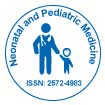开放获取期刊获得更多读者和引用
700 种期刊 和 15,000,000 名读者 每份期刊 获得 25,000 多名读者
抽象的
Pediatric Migraine Treatment: An Updated Review
Marcello Pasculli, Pasquale Striano and Maria Giuseppina Ledda
Introduction: Migraine is the most important cause of pediatric consultations due to headaches, because of significant distress and disability for child and their family. For this reason, a correct and timely treatment is very important.
Objectives and methodology: This article reviews the current knowledge about migraine treatments in children and adolescents. With the term “migraine” we refer to all migraine subtypes. Literature search was carried out in PubMed for all studies and reviews published until December 31st, 2018.
Results: The treatment of pediatric migraine is multidisciplinary. It is based on an integrated biobehavioral approach and a pharmacological intervention with use of symptomatic and/or prophylactic drugs.
Discussion: In the literature, data on the current clinical practice on treatment of pediatric migraine are very limited. We evaluated the use of acute and preventive drugs, nutraceuticals and non-pharmacological treatments.
Acute or symptomatic treatment is always more effective when given early during the attack. NSAIDs, especially ibuprofen, should be preferred to acetaminophen for treating acute attacks of migraine, because they were usually more effective and well tolerated. If NSAID are not effective, triptans could be used more frequently as first for treating migraine attack in adolescents.
Migraine prophylaxis includes a large number of drugs but relatively few rigorous, randomized controlled studies have been carried out in children and adolescents. According to the main guidelines or systematic reviews for preventive treatment of paediatric migraine flunarizine is recognized as the first choice drug for prophylaxis, followed by propanolol, amitryptiline, pizotifen, cyproheptadine and antiepileptic drugs (topiramate and valproate).
Therefore, the use of non-pharmacological treatments should be implemented in clinical practice, especially in cases with contraindications or poor tolerability or efficacy to preventive drugs.
Conclusions: Pediatric RCTs, based on larger samples sizes and innovative study protocols, involving multicenter studies and primary care services (to reduce selection bias), are needed to better understand the most effective and safe treatment strategies for pediatric migraine patients and define “responders” profile.

 English
English  Spanish
Spanish  Russian
Russian  German
German  French
French  Japanese
Japanese  Portuguese
Portuguese  Hindi
Hindi